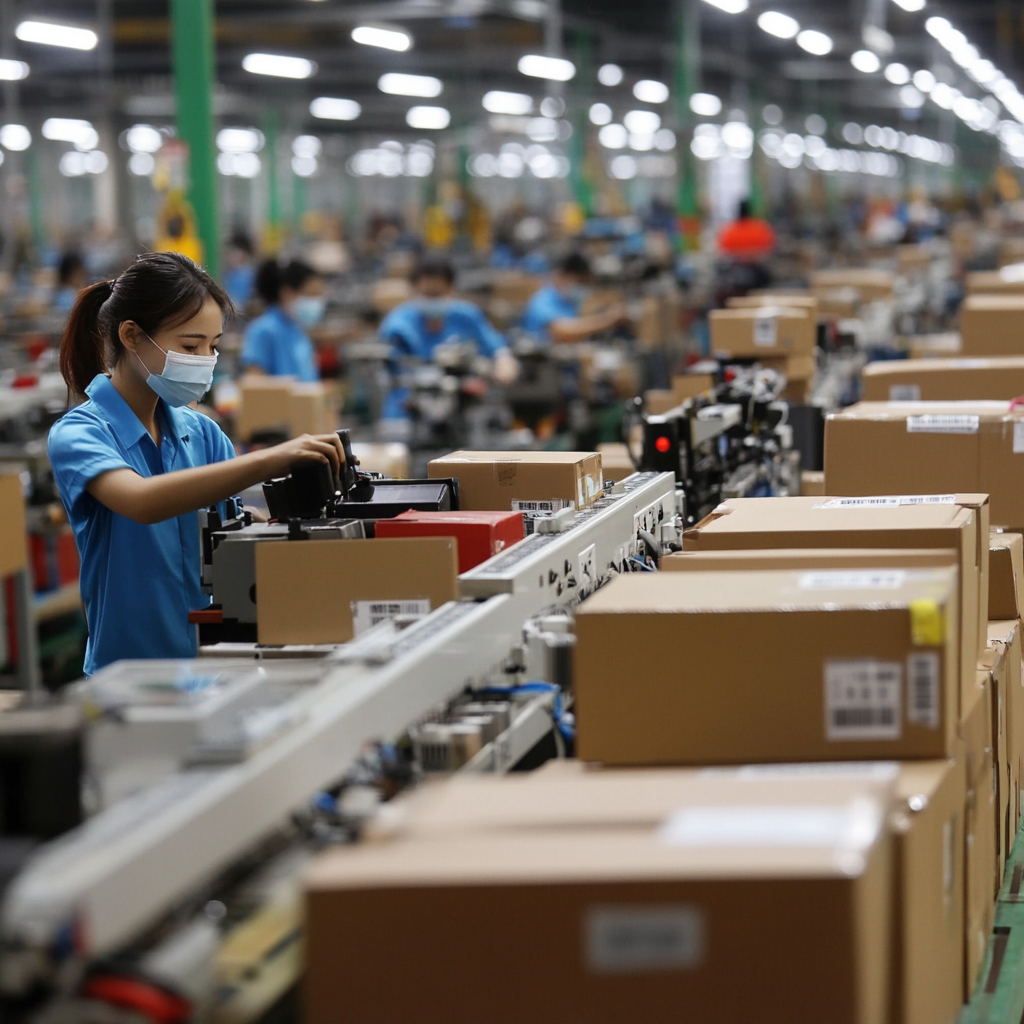Vietnam’s GDP growth accelerated to 7.09% in 2024, up from 5.05% in 2023, driven by strong export performance and foreign investment inflows. The manufacturing sector led this growth with an 8.67% year-on-year increase, contributing 2.14 percentage points to the overall GDP, the highest among industrial sectors. Exports surged by 14.3% to $405.53 billion, while imports grew by 16.7% to $380.76 billion, resulting in a trade surplus of $24.77 billion .

Foreign Investment and High-Tech Manufacturing
Foreign Direct Investment (FDI) remained a cornerstone of Vietnam’s economic growth. The country attracted $31.38 billion in FDI over the first 11 months of 2024, a 1% increase compared to the same period last year. This investment spanned various sectors, including manufacturing, high-tech solutions, and renewable energy, underscoring Vietnam’s appeal as a destination for foreign investors .
Major international companies, including Samsung, LG, Foxconn, and SpaceX, expanded their investments in Vietnam, focusing on high-end manufacturing areas such as semiconductors, electronics assembly, OLED displays, and renewable energy. Notably, Samsung announced an additional $1.8 billion investment in its Bắc Ninh plant to expand production of IT and automotive OLED products, while LG increased its investment by $1 billion, bringing the total to $5.65 billion.
Manufacturing PMI and Demand Outlook
The S&P Global Vietnam Manufacturing Purchasing Manager’s Index (PMI) rose sharply to 54.7 in June 2024 from 50.3 in May, marking the highest level since May 2022. This indicates a strong expansion in manufacturing activity, with new orders increasing at one of the fastest rates on record. Companies ramped up production and purchasing activities, reflecting robust demand and improved business conditions .
Trade Performance and Export Growth
Vietnam’s total trade revenue reached $786.29 billion in 2024, up 15.4% year-on-year, with a trade surplus of $24.77 billion. Exports increased by 14.3% to $405.53 billion, with electronics, machinery, textiles, and agricultural products being key contributors. The country has become the world’s second-largest smartphone exporter, with significant growth in exports to the United States and the European Union, highlighting its growing importance in international markets .
Inflation and Exchange Rate Stability
Vietnam’s Consumer Price Index (CPI) rose by 3.63% in 2024, aligning with the National Assembly’s target. This moderate inflation rate helped maintain cost stability for manufacturers. The Vietnamese đồng depreciated slightly by 2.9%, aiding export competitiveness without significantly increasing production costs.
Labor Market and Demographic Trends
Vietnam’s labor force remains a competitive advantage, with a population of nearly 100 million and approximately 70% in the working-age group of 15–64 years. Although wages have been rising, they remain lower than in neighboring countries like China, making Vietnam an attractive destination for labor-intensive manufacturing. However, labor shortages are emerging in industrial hubs such as Hải Phòng and Ho Chi Minh City, potentially leading to a national labor gap in the next five years. The government is investing in education and vocational training, aiming to cultivate 50,000 engineers by 2030 to meet the demands of high-tech industries like semiconductors and AI .
Investment Environment and Global Integration
Vietnam offers a favorable investment environment characterized by low production costs, tax incentives, political stability, and strategic location. The country has signed multiple free trade agreements, including the Comprehensive and Progressive Agreement for Trans-Pacific Partnership (CPTPP) and the EU-Vietnam Free Trade Agreement (EVFTA), reducing export barriers and enhancing international competitiveness. Established supply chains in electronics, textiles, and footwear are expanding into high-value sectors such as automotive components, machinery manufacturing, and semiconductor packaging, positioning Vietnam as a key player in global supply chain diversification .
Outlook for the Second Half of 2025
Vietnam’s manufacturing sector is poised for continued growth in the second half of 2025. The government’s proactive measures, including infrastructure development and investment in education and vocational training, support this positive outlook. While challenges such as labor shortages and global economic uncertainties exist, Vietnam’s strategic initiatives and favorable investment climate position it well for sustained economic expansion.
Conclusion
Vietnam’s manufacturing sector in 2024 exhibited strong performance, characterized by robust GDP growth, increased foreign investment, and a favorable trade balance. The country’s strategic initiatives in infrastructure development, education, and trade agreements further enhance its attractiveness as an investment destination. With continued focus on addressing emerging challenges, Vietnam remains a compelling choice for investors seeking opportunities in Southeast Asia.




